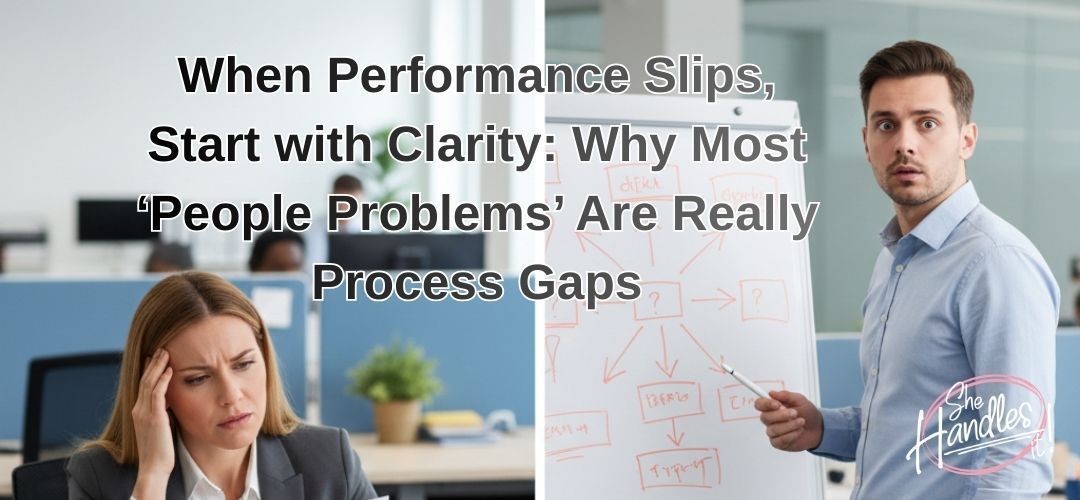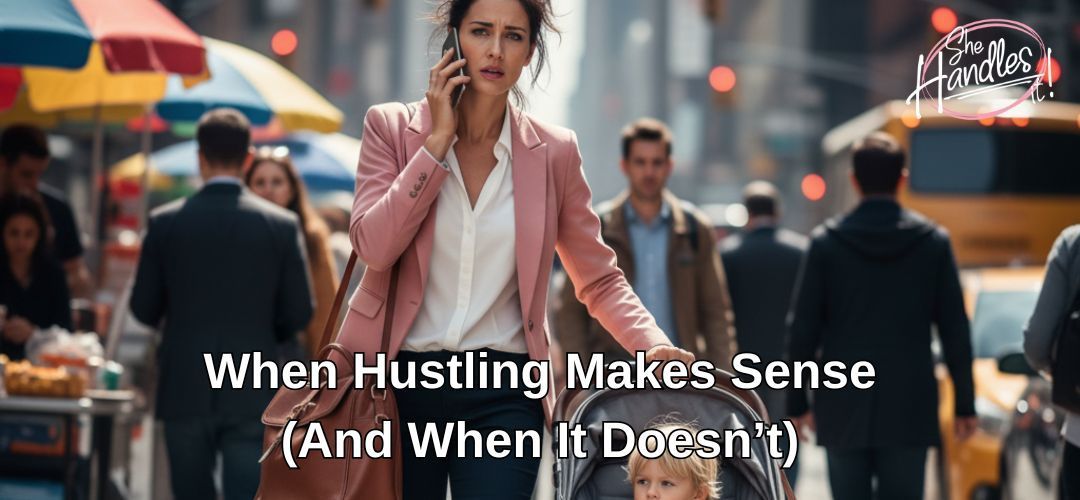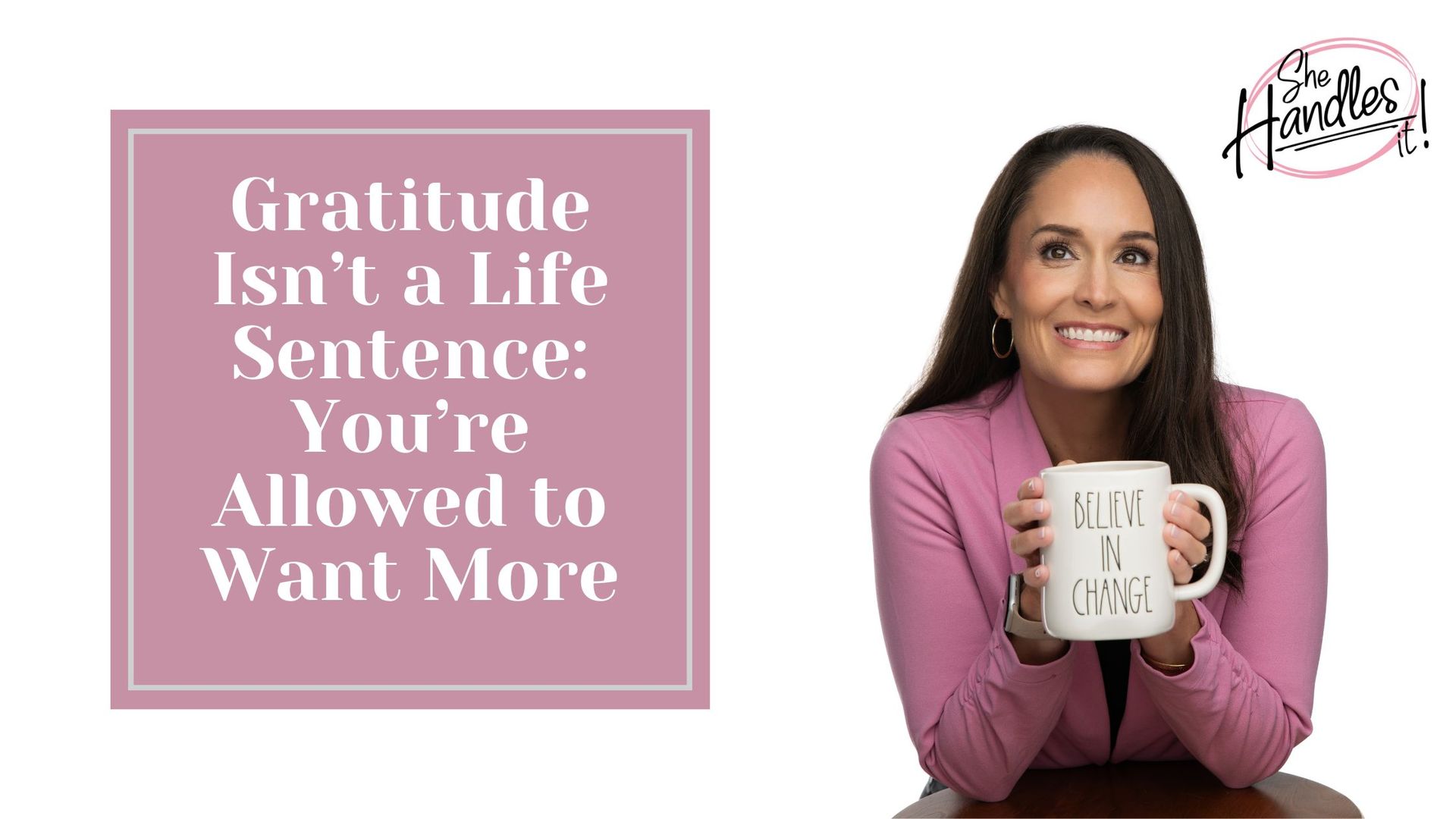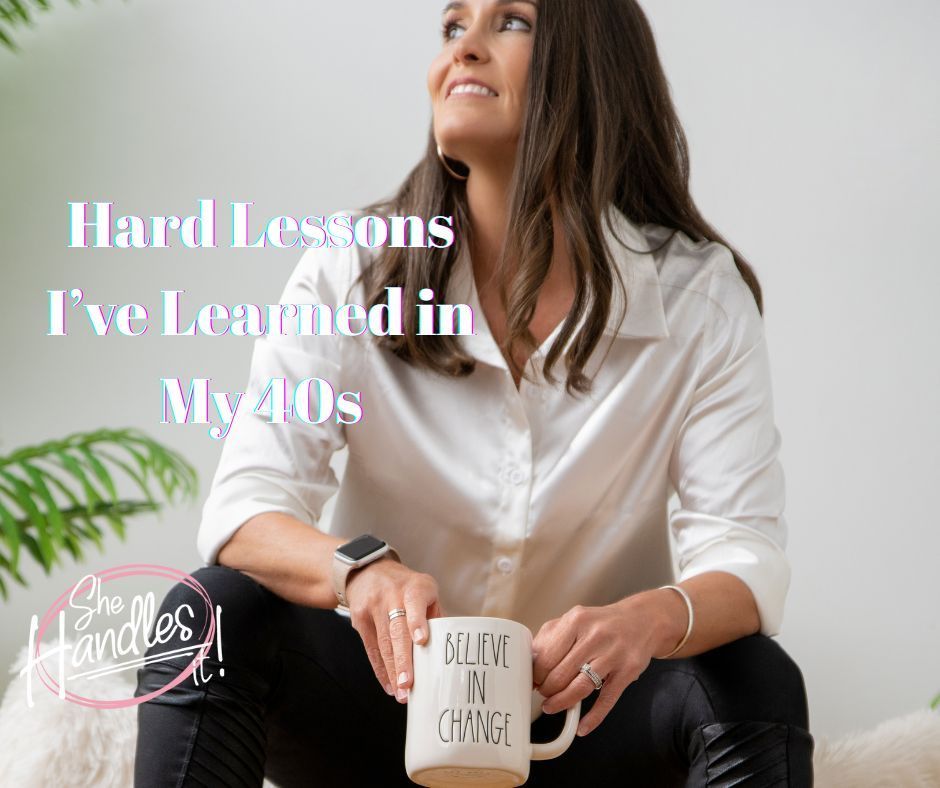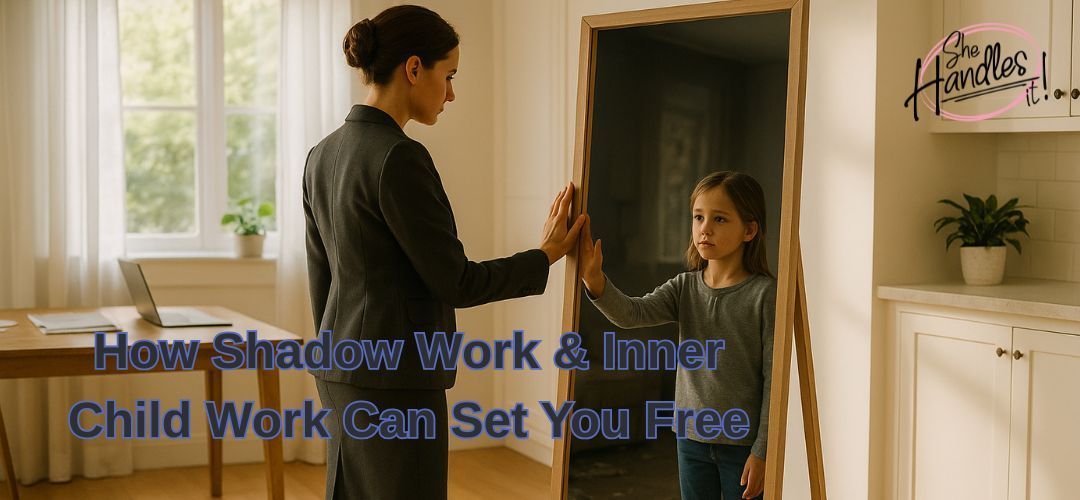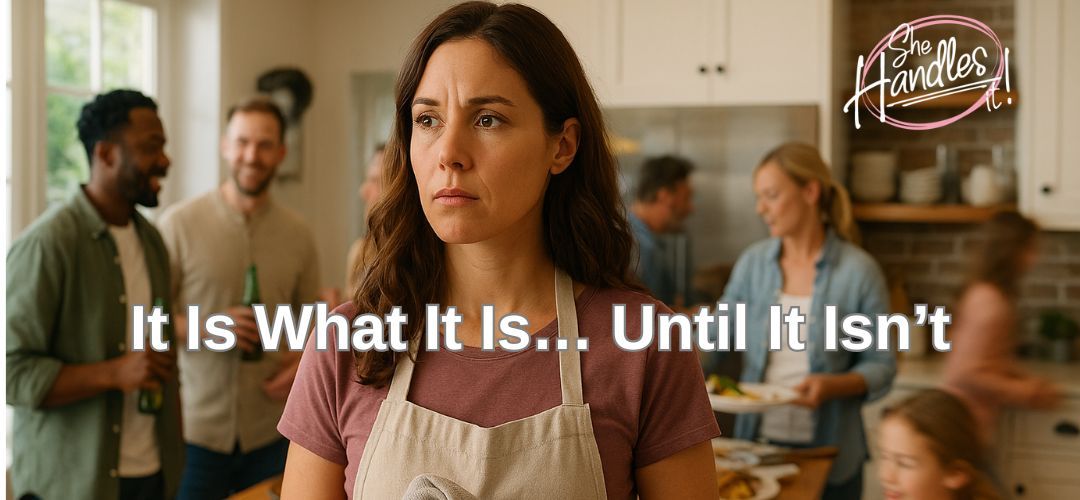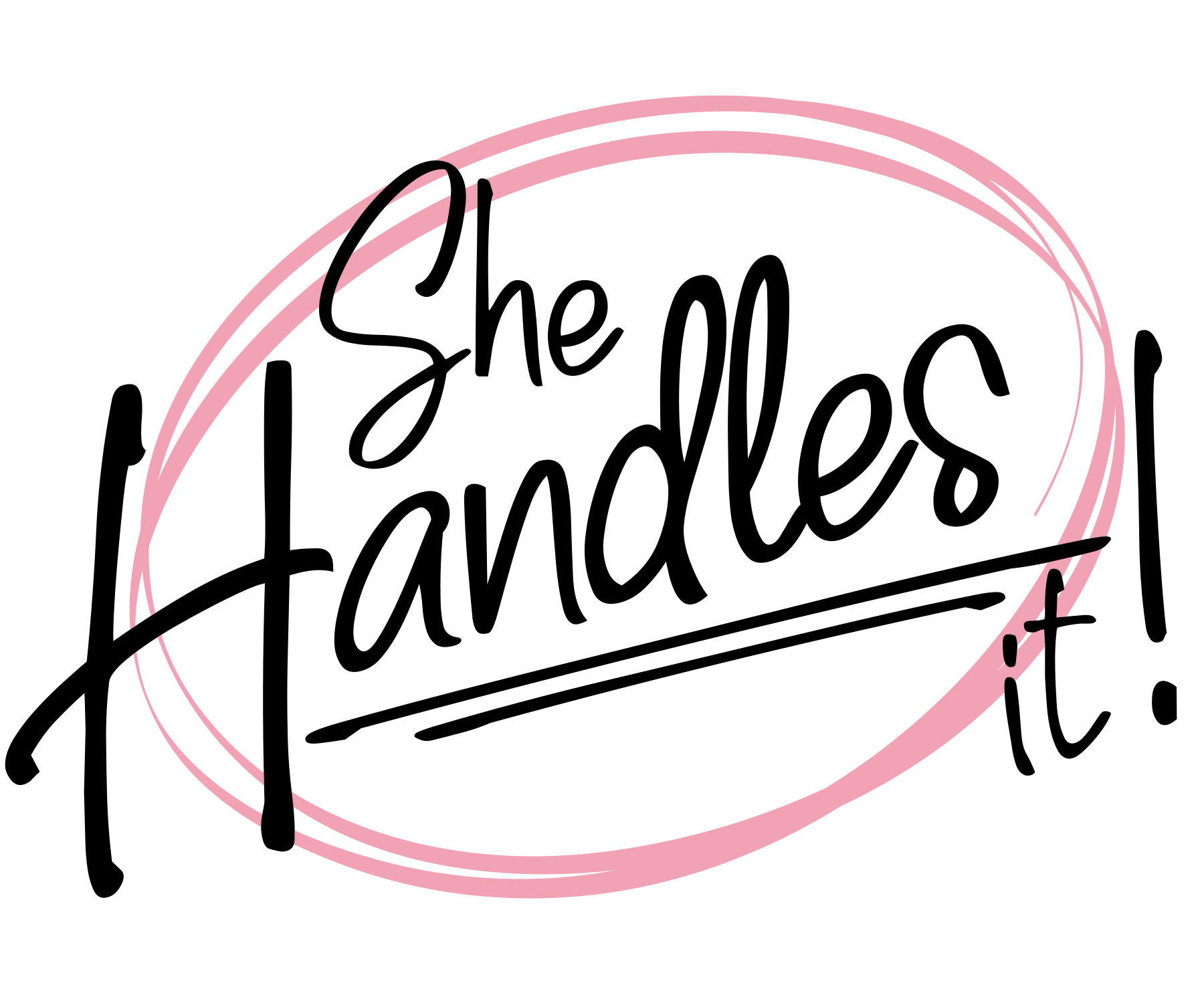
Search She Handles It Blog Posts
I’ve given a lot of presentations over the years—on stages, in boardrooms, at industry conferences, and in small rooms with just a handful of attendees.
And while I’ve learned that public speaking does get easier with experience, it also gets better when you approach it with intention.
There are tons of great public speaking tips out there—be confident, know your material, make eye contact—but today I want to share the five things that have helped me the most. These aren’t textbook tips.
These are the things I’ve learned from being in the room, watching faces, adjusting on the fly, and reflecting after the fact.
1. Know Your Audience and Make It About Them
I don’t rebuild my presentations from scratch every time, but I always tailor them to the audience I’m speaking to.
One of my staple presentations on general digital marketing was originally created for a pool and spa industry event.
Since then, I’ve delivered it to realtors, lawyers, and other service-based professionals. The difference? The content looks and feels custom to them.
All I have to do is swap out screenshots and update the stats. For example, in one slide where I talk about Google Ads, I’ll highlight that the average cost-per-click (CPC) for legal services is $8.94, while for real estate, it’s just $1.55. Same slide, different impact—because now, it speaks directly to them.
What’s been most rewarding? After these sessions, I consistently hear, “Wow, thank you for customizing your presentation to us.” People notice. And when they feel like the content is made for them, they stay engaged.
2. Slow Down. Pause. Breathe.
Early on, I thought pausing would make me seem unprepared. So, I used to talk fast. Like, race-to-the-finish-line fast. But here’s the thing: when you talk too quickly, people can’t absorb your message. Worse, you lose the room entirely.
Now, I pay close attention to my audience. If I see heads down, shifting in seats, or people looking at their phones, that’s my cue.
I pause.
Sometimes I’ll even reset with a question or a quick engagement moment (more on that below). Slowing down not only helps the audience catch up—it helps me regain control and refocus the room.
If you’re seeing the tops of heads instead of eyes, it’s time to slow down and re-engage.
3. Go Off Script and Tell Stories
This one’s a game-changer. People don’t remember your bullet points—they remember your stories.
Before any presentation, I do a slide-by-slide walk-through and jot down quick talking points. Just a few bullet points or key phrases. This helps me commit them to memory without sounding robotic. The slide becomes my visual trigger, and the story brings the content to life.
One of my favorite go-to stories is about a client’s yellow website. Their marketing team hated it. Everyone said it needed to be redesigned. But the data told a different story: great traffic, strong flow-through, and high conversions.
Turns out, yellow was their brand color—and it made them instantly recognizable. That story always hits home when I talk about the importance of data over personal preference in marketing.
Because at the end of the day, it’s not about what you like—it’s about what works.
Stories like that connect on a human level. And when people connect, they remember.
4. Engage the Room—Don’t Just Talk At Them
If your presentation is one-way, you’ll lose people. Engagement is everything. I don’t just ask rhetorical questions—I actually get people involved. I’ll do a visualization exercise (yes, I ask people to close their eyes), or I’ll throw in live polls.
For example, I might ask, “How many of you are using social media to drive leads right now?” or “Does your Google Ads data look anything like what I just showed you?” These questions aren’t just to keep people awake—they help me tailor the rest of my talk in real time.
I’m always looking for shared pain points so I can spend more time where it matters most.
5. Practice—and Ask for Feedback That Matters
Here’s a myth: practicing means memorizing.
One of the best pieces of feedback I ever got was to stop trying to memorize my presentations. When I did, I was so focused on remembering the “right” next sentence that I lost my connection with the audience.
Instead, I print out every slide, do a solo walk-through, and write my talking points. These short notes (not full paragraphs!) serve as reminders of what I want to convey.
I review them multiple times—including right before I go on stage. This process helps me internalize the flow and frees me up to speak naturally and make eye contact.
I also always ask for honest feedback —not just “Was it good?” but “Did I go too fast?” “Was anything unclear?” “What stuck with you the most?” Because every talk is a chance to grow.
Public speaking is a skill—and like any skill, it gets stronger with practice, feedback, and intentional improvement. These five strategies have helped me step into my voice more confidently and deliver messages that truly land.
Want more tips and some live inspiration? I’ll be diving deeper into this topic at my upcoming SheHandlesIt workshop featuring the amazing Mihika Patel , founder of 1 Mighty Mama.
She’s a powerhouse when it comes to using your voice with purpose and authenticity—and I’m so excited for her to share the stage with me.
Whether you’re just starting out or looking to polish your public speaking game , I promise you’ll walk away with tools you can use right away.
The post Speak Like You Mean It: 5 Real Tips That Made Me a Better Public Speaker appeared first on She Handles It.
